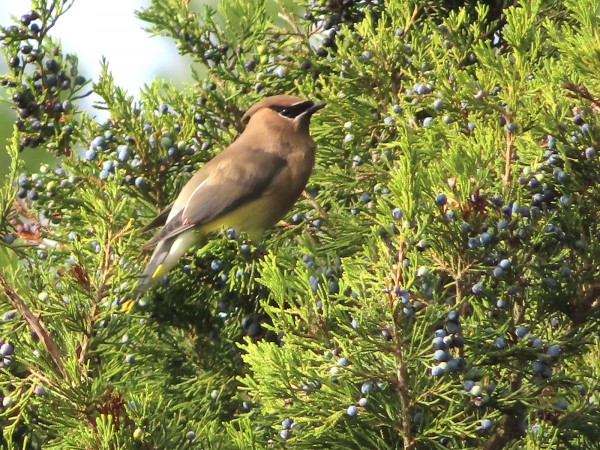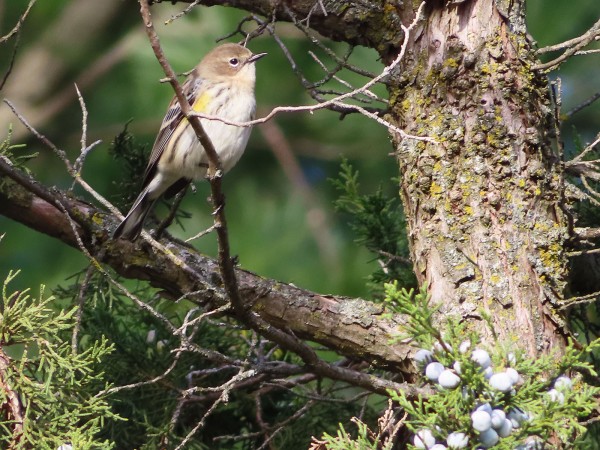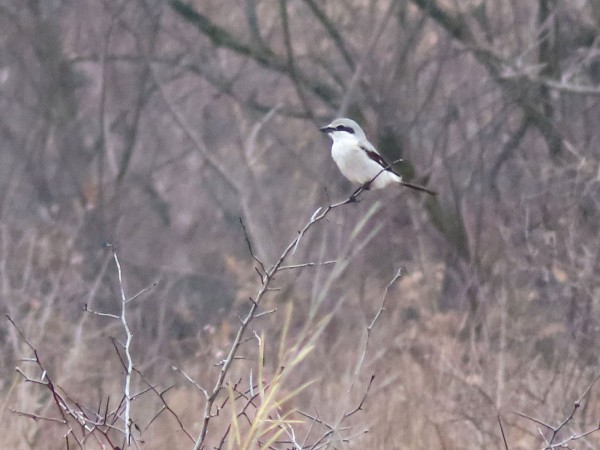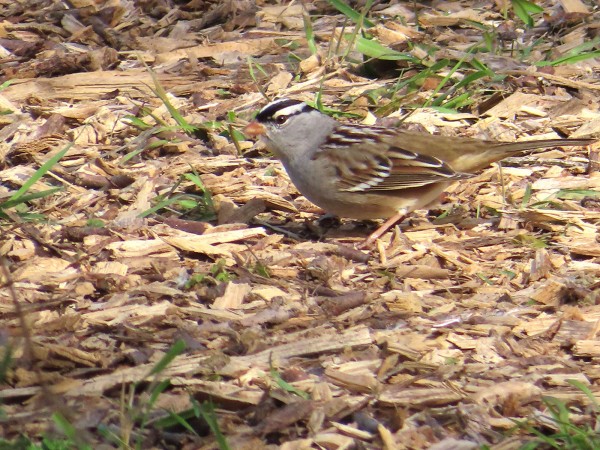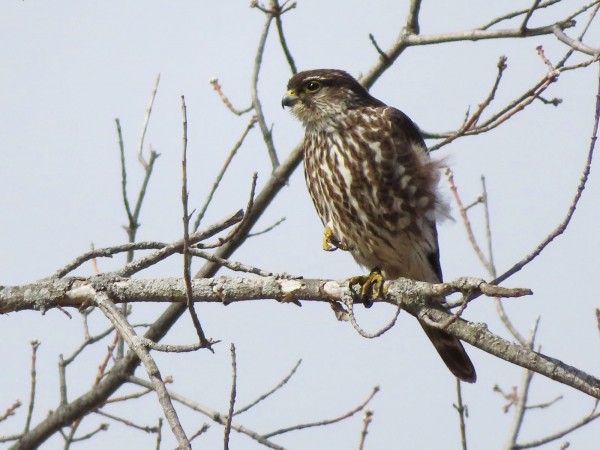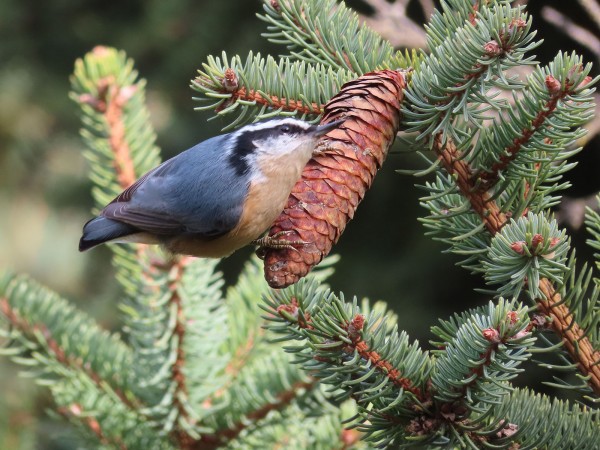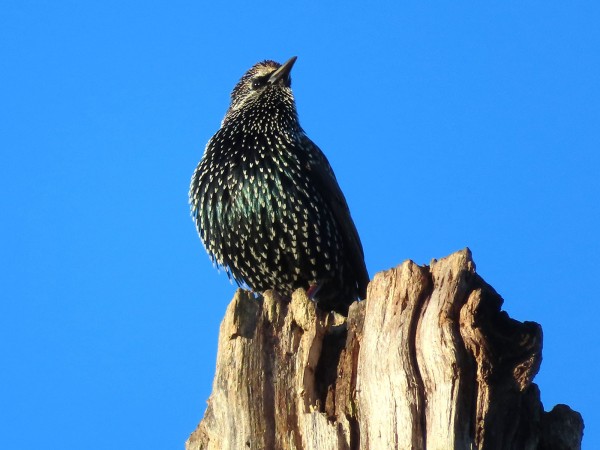Chuck's Birding Report #85
26 October - 01 November 2021
Dear fellow flock of birders,
Finally, the trees are turning color. It seems very late to me. It should have happened at least a couple weeks ago. Am I remembering past years correctly? Anyway, if you have not walked in the Arboretum recently do so now before all the leaves drop. The Maples in Gallistel Woods and Wingra Woods are brilliant yellow. The horticultural varieties of tree, especially the Maples, in Longenecker Gardens are all sorts of colors but the reds are particularly outstanding. There’s one Maple that starts out yellow at the bottom and turns progressively more orange-red toward the top. Just breathtaking!
Again as I mentioned last week there are lots of fruit on the Crabapple Trees that are being eaten by several species of birds. They will provide food for the birds all winter. There are also Juniper berries in the pinetum, located in the eastern part of Longenecker Gardens, that are especially loved by the Cedar Waxwings. Last Tuesday and a couple days after that birders have been treated to flocks of about 100 Cedar Waxwings flying all over the Pinetum. They were really active. Included is a photo of a Cedar Waxwing who is about to grab and swallow whole several Juniper berries.
There are still a few Yellow-rumped Warblers around. I saw 8 last Saturday but only 1 today. Sometimes we see a Yellow-rumped Warbler in the Pinetum during the Christmas Bird Count in the middle of December. Most other warblers are long gone. A photo of a Yellow-rumped Warbler in winter plumage is included. I can’t wait until they return in the spring outfitted in their breeding plumage.
I’m still seeing our family of 4 Sandhill Cranes, 2 adults and 2 colts, fly out of Curtis Prairie shortly after sunrise. I thought they would have left by now but I’m wrong.
The Northern Shrike first seen a week ago is still around and being seen on Curtis Prairie. It is only seen here in late fall, winter and early spring. It is a mostly gray bird with a black tail and black parts of its wings. It also has a black mask across its eyes. Its upper beak hooks downward at the tip. It most often perches at the very top of a large tree. I always look for it there as I scan all the tall trees on Curtis Prairie and adjacent areas. I saw it Friday while it was raining, Saturday when it was sunny and Sunday on a very cloudy, gloomy day. In all the days before Sunday I didn’t hear it vocalize at all. On Sunday it was vocalizing constantly. It doesn’t sing but rather cries, rattles, croaks and makes an aaak sound. It even made a meow sound a few times. All my photos were bad so I included a better photo that I took some time ago so you could see the details better.
I did see 4 White-throated Sparrows in the woods on the north side of Curtis Prairie today but their numbers are diminishing. Earlier last week I saw a White-crowned Sparrow but again I haven’t seen one in the last couple days. A photo of a male White-crowned Sparrow is included.
There are lots of Dark-eyed Juncos in the Arboretum. I primarily see them feeding on the ground under trees I and in the grass in Longenecker Gardens. They are a winter bird along with the Northern Shrike. There are a couple other winter birds a few of which have been seen in Dane County but I have not seen them yet. They are the Pine Siskin and American Tree Sparrow. Check bird sources for images and begin looking for them in the Arboretum.
I see Cooper’s Hawks and Red-tailed Hawks almost daily. I had a rare sighting of a Northern Harrier fly over Curtis Prairie on Saturday. I wish I could have captured a photo of it but it was too far away. Last Thursday as I was looking for the shrike I found a Merlin instead. We’ve had several sightings of this small hawk especially in the snags just north of Curtis Prairie. A photo of a Merlin is included.
Another favorite bird of mine is the Red-breasted Nuthatch. They have been seen in the Pinetum frequently. The last couple days they seem to be more numerous and active than ever. I’ve seen at least 4 of them the last few days and they have been feasting on the seeds of certain pinecones that are open. They have also been vocalizing a lot. A photo of one is included.
Recently a lot of European Starlings have been seen in the Crabapple Collection and the Pinetum. There have singles sometimes but also flocks of up to 80 flying around. They are not my favorite bird because they are an invasive but I need to at least acknowledge them. I found an adult in its speckled, white on black plumage that I thought was worth a photo. It is included.
My last photo is of a Blue Jay. Earlier in the fall they were very noisy. Now they have become much more silent. Looking closely at their plumage they are really quite handsome in their blue, white and black colors. One behavior that seems unique to me is that while flying they look around, turning their head to the left and to the right. I don’t know of other birds that do that.
That’s the bird report for the past week.
Good health to all of you and good birding too,
Chuck

